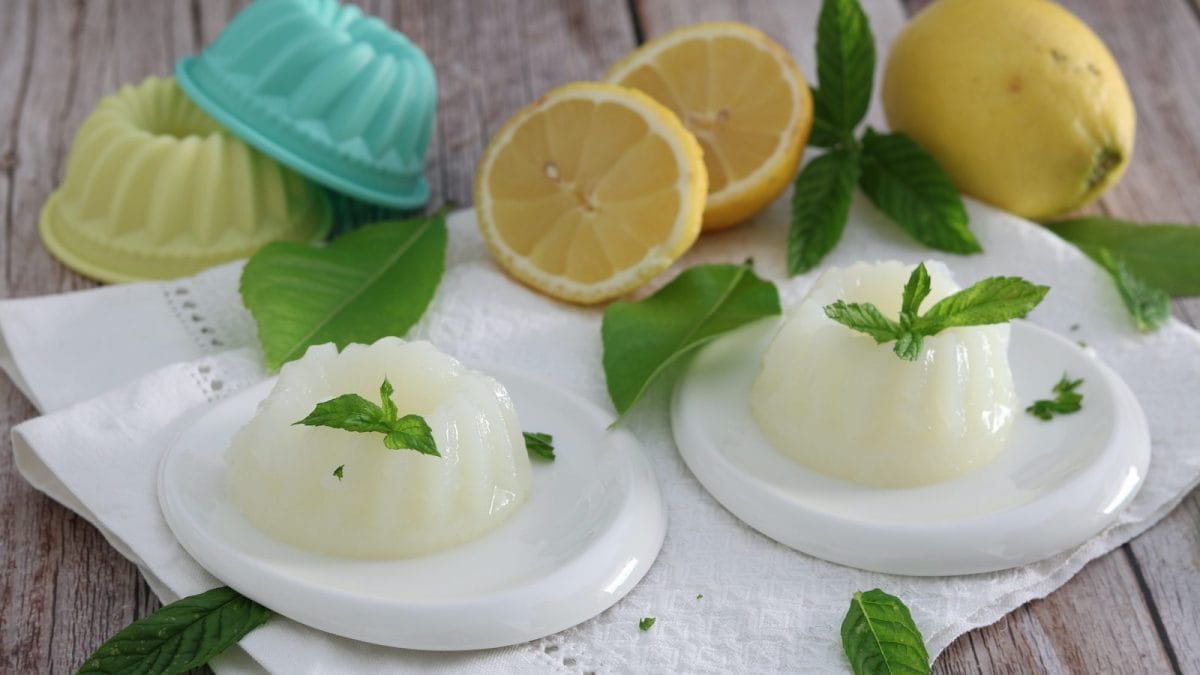
Lemon Frost (or Gelo di Limone) is a typical Sicilian dessert, a perfect summer recipe made simply with lemon juice and zest, corn starch and granulated sugar. It is a sort of pudding, but without butter and prepared with only freshly squeezed fruit instead of milk, perfect to serve as a light and refreshing snack, or to bring to the table to "cleanse the palate" at the end of a fish-based dinner, instead of the classic sorbet.
To make it at home, you will first need to soak the citrus peel in 400 ml of cold water for at least 6 hours. Once the time has passed, simply pour the filtered infusion water into a thick-bottomed saucepan, along with the corn starch and lemon juice, let everything thicken over a low flame for 5 minutes and then transfer the resulting mixture into the appropriate fluted molds. Resting in the fridge will do the rest, giving you a simple and refined single-serving dessert, to be embellished with mint leaves or garnished on top with chopped toasted pistachios.
What is Lemon Frost (Gelo di Limone)?
Gelo di limone, or Sicilian lemon frost, is a refreshing citrus dessert with roots deep in Sicily’s rich cultural history. Its origins trace back to the Arab rule of the island between the 9th and 11th centuries, when sherbet-like fruit ices were introduced and evolved into various chilled treats like granitas and fruit-based jellies. Over time, particularly by the 14th century, a version of the dessert known as biancomangiare—originally made with almond milk and jasmine—gained popularity, allegedly served to Queen Eleonora d’Angiò.
Eventually, almond milk was replaced by lemon juice and zest, and the modern gelo di limone emerged as a pudding-like dessert thickened with cornstarch and sweetened with sugar. It became a traditional favorite in cities like Palermo, especially during religious festivals such as those honoring Santa Rosalia, valued not just for its taste but for its cooling and digestive properties after meals.
The dessert’s influence traveled across the Atlantic with waves of Sicilian immigrants, particularly to cities like New York and Philadelphia. There, its essence evolved into “Italian ice” or “water ice,” a more granular, icy treat that still reflects its Sicilian heritage, with lemon remaining the most iconic flavor. While gelo di limone in Italy is a molded, smooth jelly served chilled, in America it became a cup-served summer staple.
Pro Tips for The Best Lemon Frost
- Also suitable for vegans and lactose intolerant, this preparation requires the only precaution of using organic lemons that have not been chemically treated and of being careful, when removing the peel, not to damage the slightly bitter white part.
- When purchasing, we suggest you prefer green lemons, which are particularly fragrant, but alternatively, yellow ones will also be fine.
- For a richer lemon aroma, let the lemon zest steep in water (or water and sugar) overnight in the fridge. This slow infusion enhances the depth of citrus flavor in the final dessert.
- After cooking the mixture with cornstarch, strain it before pouring it into molds. This removes zest pieces or lumps and gives your gelo a silky, smooth texture.
- Once the cornstarch is added, cook the mixture over medium heat and stir constantly. This prevents lumps and ensures the starch activates uniformly, creating a smooth, pudding-like consistency.
- Let the dessert cool at room temperature before transferring it to the fridge. Chill for at least 4–6 hours, preferably overnight, for it to fully set and develop its refreshing texture.
- To avoid flavor transfer and to help with even cooling, use glass or ceramic ramekins. Avoid metal molds which can affect both taste and setting.
- For the most refreshing experience, serve gelo di limone straight from the fridge. Avoid leaving it out too long, especially in warm environments, to maintain its firm texture.
Is This the Same as a Lemon Granita?
No, gelo di limone is not the same as lemon granita. While both are Sicilian lemon desserts, gelo di limone is a smooth, pudding-like jelly thickened with cornstarch, whereas lemon granita is a coarse, crystalline frozen dessert made by freezing and scraping lemon juice, sugar, and water.
Can I Use Bottled Lemon Juice?
While you can use bottled lemon juice in a pinch, it's not recommended for gelo di limone. Fresh lemon juice provides a brighter, more vibrant flavor, and the recipe also relies on the zest for aroma, which bottled juice lacks. For best results, always use fresh lemons.
Can I Add Anything Else to This Dessert?
Yes, you can enhance gelo di limone with a few creative additions. Popular options include a splash of limoncello for extra zest, a layer of crushed amaretti cookies for texture, or a garnish of mint leaves or candied lemon peel. Just be sure not to overpower the delicate lemon flavor.
Can I Make This Ahead of Time?
Yes, gelo di limone is perfect for making ahead of time. In fact, it needs several hours to chill and set properly—overnight is ideal. You can prepare it up to 2–3 days in advance, just keep it well covered in the fridge to maintain freshness and prevent it from absorbing other odors.
Does It Freeze Well?
Gelo di limone does not freeze well. Freezing can alter its delicate, jelly-like texture, making it grainy or watery when thawed. It’s best enjoyed chilled from the fridge, not frozen, to preserve its smooth and refreshing consistency.
How to Store Any Leftovers
Store any leftover gelo di limone in the refrigerator, covered tightly with plastic wrap or in an airtight container. It will stay fresh for up to 3 days. Avoid stacking or stirring it, as this can break its delicate structure—serve directly from the container for best results.
Ingredients
How to Make Sicilian Lemon Frost (Gelo di Limone)
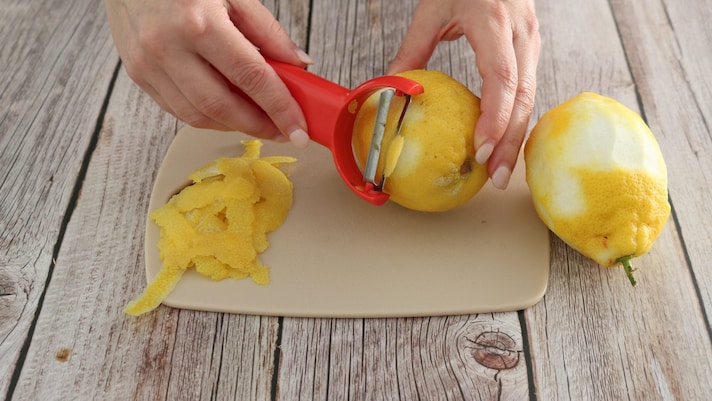
Wash the lemons thoroughly under running water, then delicately remove the zest with the help of a potato peeler being careful not to damage the white part, which is slightly bitter.
Wash the lemons thoroughly under running water, then delicately remove the zest with the help of a potato peeler being careful not to damage the white part, which is slightly bitter.
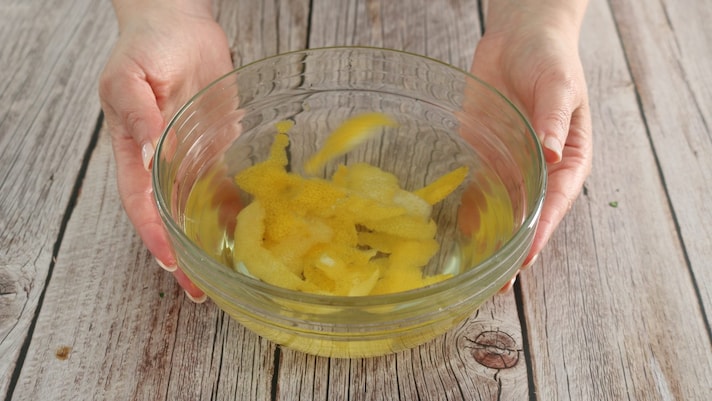
In a bowl, soak the lemon peels in the cold water called for in the recipe and leave to infuse for about 6 hours.
In a bowl, soak the lemon peels in the cold water called for in the recipe and leave to infuse for about 6 hours.
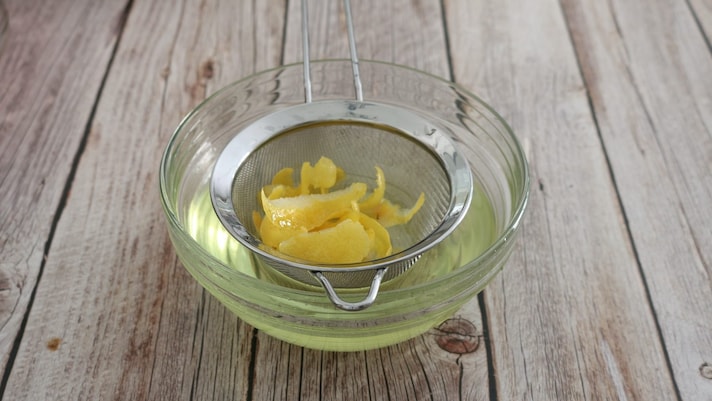
Once the time has passed, filter the flavored water with a fine mesh strainer.
Once the time has passed, filter the flavored water with a fine mesh strainer.
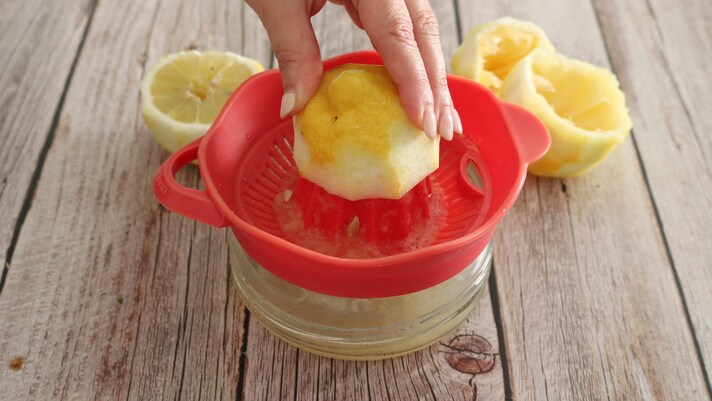
Squeeze the lemons and extract the juice: you will need about 160 ml, if the citrus fruits do not have enough, proceed to squeeze some more.
Squeeze the lemons and extract the juice: you will need about 160 ml, if the citrus fruits do not have enough, proceed to squeeze some more.
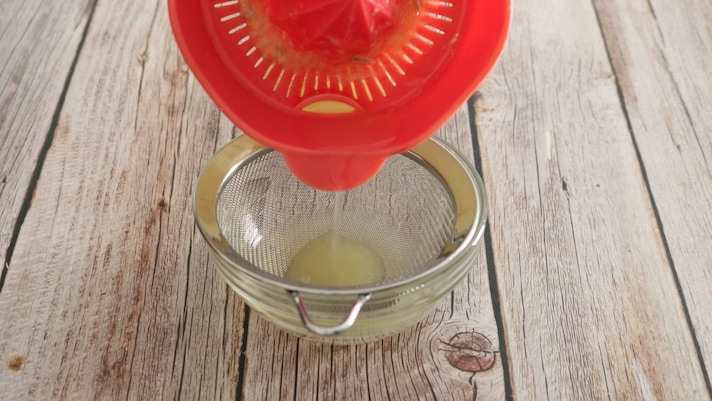
Also filter the lemon juice.
Also filter the lemon juice.
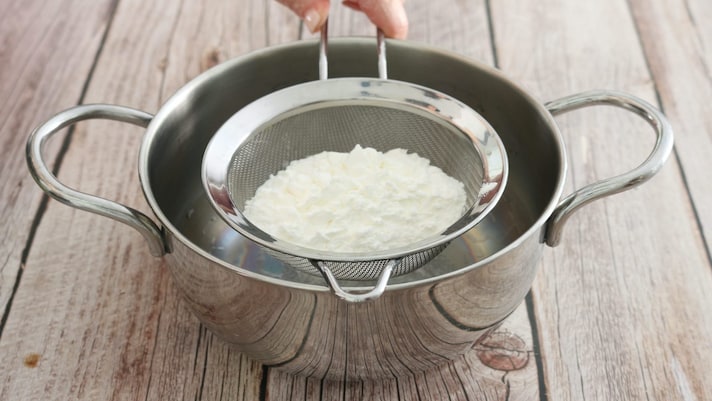
In a small saucepan with a heavy bottom, sift the cornstarch and add the granulated sugar.
In a small saucepan with a heavy bottom, sift the cornstarch and add the granulated sugar.
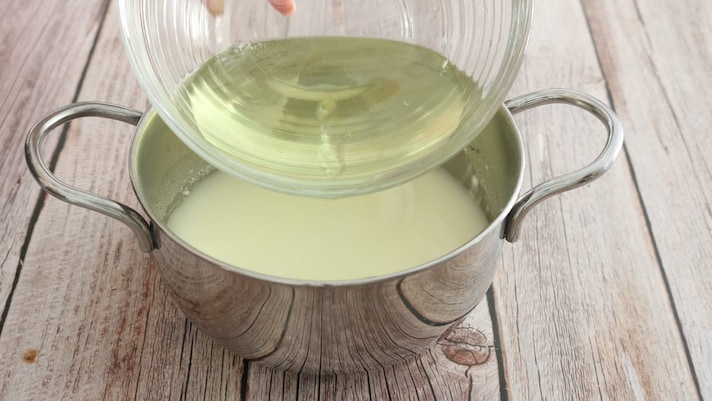
Pour the infused water.
Pour the infused water.
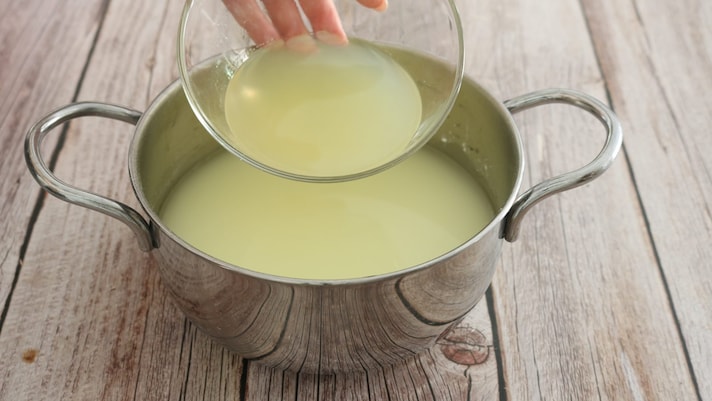
Add the lemon juice.
Add the lemon juice.
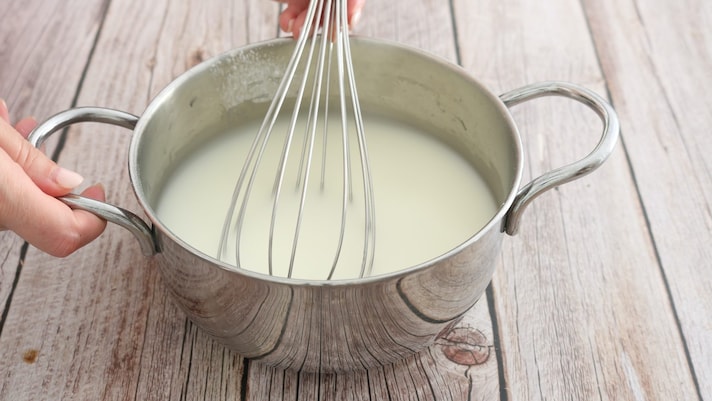
Mix thoroughly with a hand whisk to avoid lumps forming.
Mix thoroughly with a hand whisk to avoid lumps forming.
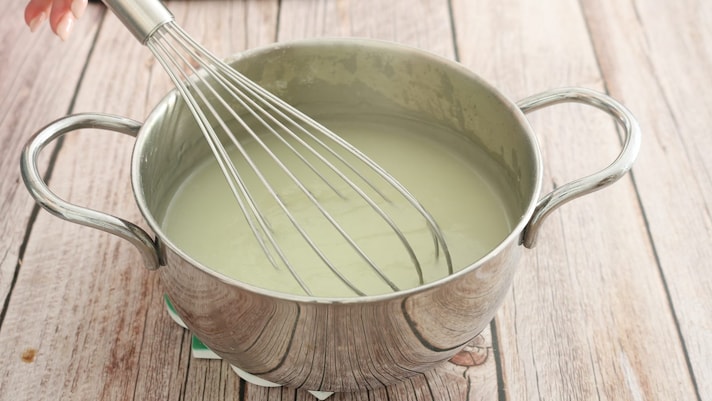
Place on the stove and cook on a low flame for about 5 minutes, stirring often, until the mixture begins to thicken.
Place on the stove and cook on a low flame for about 5 minutes, stirring often, until the mixture begins to thicken.

At this point, pour the mixture into individual molds and transfer to the fridge for at least 6 hours.
At this point, pour the mixture into individual molds and transfer to the fridge for at least 6 hours.
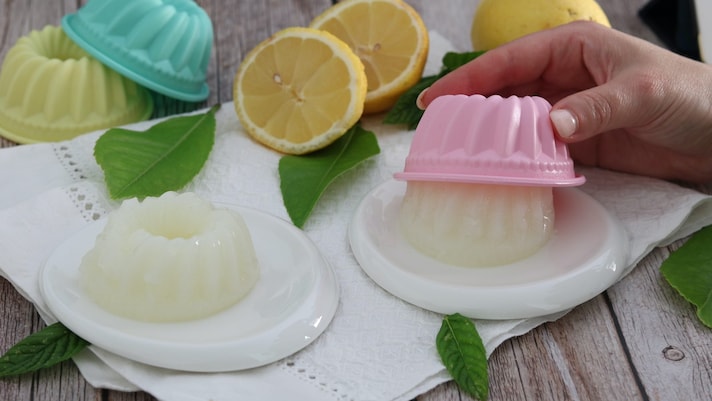
When ready to serve, unmold the lemon jelly onto dessert plates.
When ready to serve, unmold the lemon jelly onto dessert plates.
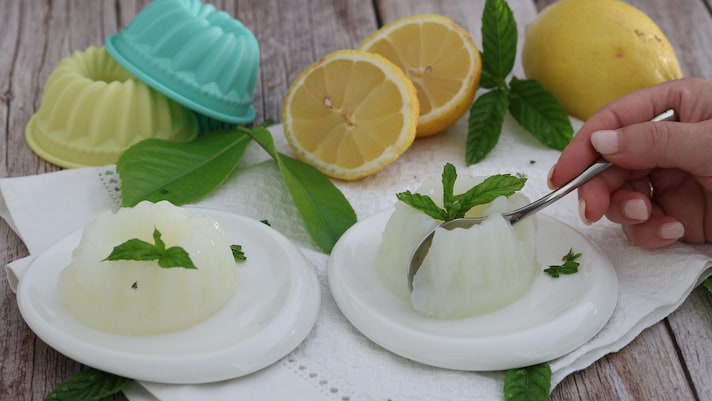
Garnish with a sprig of fresh mint, dip the teaspoon and enjoy.
Garnish with a sprig of fresh mint, dip the teaspoon and enjoy.
;Resize,width=767;)
